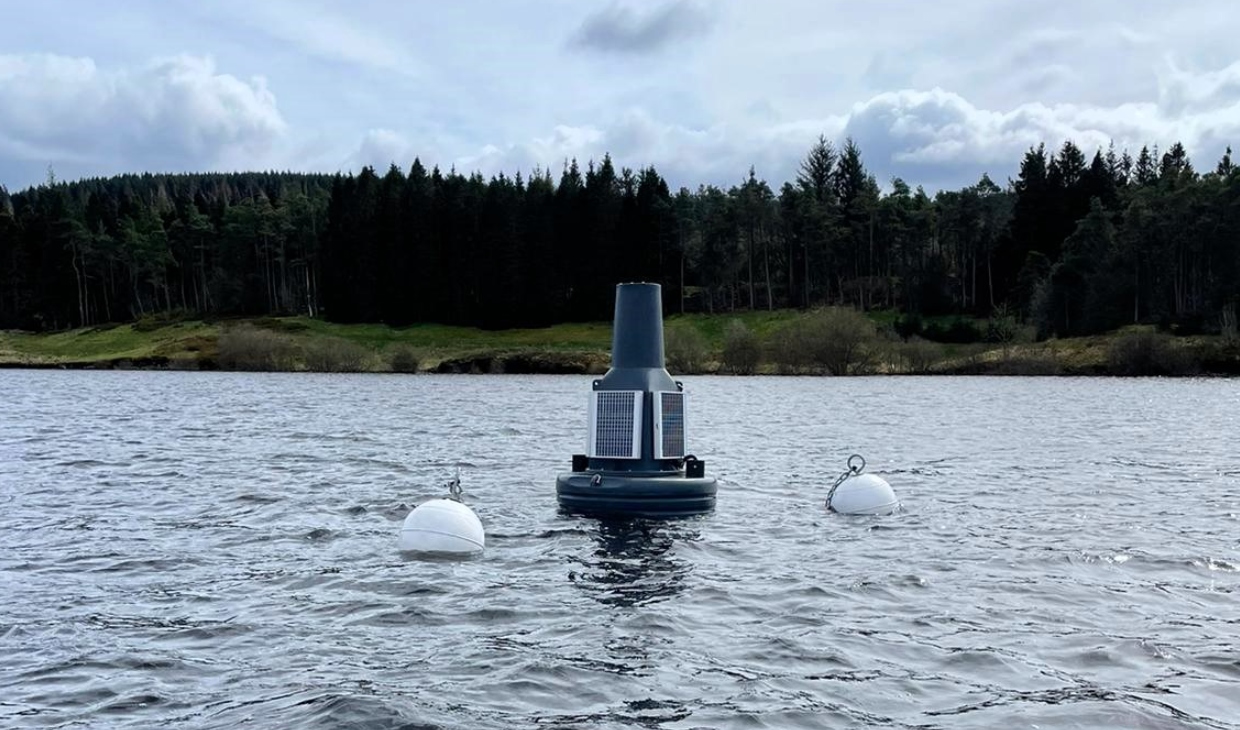Water quality data buoy to be floated at Gartmorn Dam
Water quality data buoy to be floated at Gartmorn Dam
/filters:format(webp)/filters:no_upscale()/prod01/cdn/media/stirling/news/news-centre/2024/may/DataBuoy1920689.jpg)
A buoy is to be installed at Gartmorn Dam to collect environmental data for world-leading research led by University of Stirling scientists which will benefit the local area.
The floating data buoy, which is almost two metres tall, has state-of-the-art sensors which can measure water quality in near real-time, sending data over the mobile phone network so they can be accessed by scientists, governmental organisations, and local communities.
It is the latest buoy to be deployed on water bodies across the Forth Valley as part of the Forth Environmental Resilience Array (Forth-ERA) programme led by Scotland’s International Environment Centre (SIEC), based at the University.
Buoys have already been deployed at Carron Valley Reservoir and Linlithgow Loch, and researchers are exploring further locations in the Forth Estuary at Alloa, Kincardine and east of the Forth Bridge, and at Loch Katrine and Gladhouse Reservoir.
 A data buoy at Carron Valley Reservoir
A data buoy at Carron Valley Reservoir
Forth-ERA – a first-of-its-kind digital observatory of the Firth of Forth's entire water catchment – will enable scientists to undertake groundbreaking research, as well as enabling local and national organisations to undertake data-led, evidence-based environmental management.
In addition to water quality, Forth-ERA will also support improved monitoring of biodiversity, floods and droughts, and air quality. Ultimately, this work will deliver a sustainable and just transition to a net zero future.
Professor Peter Hunter, Forth-ERA Science Director at SIEC, said: “This deployment marks the start of an ambitious project to understand changes in water quality and biodiversity at Gartmorn Dam, and to develop evidence to inform the future management of the site.
“In partnership with stakeholders, including Clackmannanshire Council, NatureScot, and Scottish Water, as well as landowners and community groups, SIEC identified a range of environmental variables to monitor that would benefit the local community, the work of local authorities and businesses, as well as university researchers.”
The buoy is expected to be in place for several years to maximise the value of the data it collects. Occasional maintenance visits will be required so visitors to Gartmorn Dam may see a technical team from Forth-ERA travel to and from the buoy on a boat. Data collected will be publicly available on the University of Stirling website later in the year.
Mark Petrie, Production Maintenance Manager at Scottish Water, said: “Gartmorn is our oldest dam and remains in our ownership, although the water body is not used for the public water supply and is leased to Clackmannanshire Council.
“We’ve helped in the selection of biodiversity sensors and to facilitate the deployment of the water quality monitoring buoy. We welcome the research at Gartmorn and at other locations and we will integrate the learning from the work into our wider plans going forward.”
Nationally important
Additional devices which collect environmental data for the project will be installed on land around Gartmorn Dam. Eco-acoustic sensors will help to monitor bird species using song recordings that will be automatically analysed to identify species in near real-time. Bat detectors will provide information on bat activity and species using ultrasonic recordings of their echolocation calls. To monitor the activity of mammals around the dam, wildlife cameras will also be placed across the site.
People counters placed at strategic waypoints will help local stakeholders to better understand popular routes for visitors and measure footfall.
The project will link into efforts to foster sustainable business opportunities in Clackmannanshire and build vital green skills in the local workforce. The lessons learned from establishing this comprehensive and automated monitoring network can in future be applied to similar projects in Scotland and beyond.
Ewan Lawrie, NatureScot’s Freshwater Advisory Officer, said: “Freshwater lochs are an iconic part of Scotland. NatureScot is pleased to contribute to this project, which will provide high-quality, near real-time data to help people understand the issues around this nationally important loch and help us to continue to care for it.”
Established as part of the Stirling and Clackmannanshire City Region Deal, Scotland’s International Environment Centre is a pioneering collaboration that will create an innovation community in the Forth Valley, driving the creation of a net zero regional economy and acting as a global exemplar of low-carbon growth.
The Stirling and Clackmannanshire City Region Deal is a £90.2m investment from the UK Government and Scottish Government in innovation and infrastructure that will drive inclusive economic growth throughout the region.
Regional partners, including Clackmannanshire Council, Stirling Council, and the University of Stirling, will invest up to £123.8m, resulting in a Deal worth more than £214m, to be delivered over the next 10 to 15 years.
